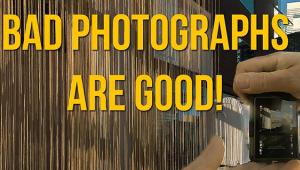Don't Spoil Photos with Excessive Editing (VIDEO)

Whether you process images in Lightroom, Photoshop, or another full-featured editor, it's difficult not to get carried away by all the capabilities available. But sometimes you'll achieve much better results by restraining yourself and taking a subtle approach so that you don't ruin photos by giving them an "over-cooked" look.
In this 10-minute tutorial from Adorama TV, you'll learn why it often pays off when you avoid making too many adjustments, so that your images retain a realistic appearance. In other words, you can save time and effort while achieving more impressive photos if you follow the old adage that "less can be more."
Instructor David Bergman is a hardworking New York-based pro who specializes in the unique combination of sports, concert, and celebrity photography. This episode demonstrates how to keep things simple when editing a wide variety of digital and film photographs of a variety of genres. He kicks off the video with this relevant question: "How much photo editing is actually too much?"

This lesson was inspired by a question from one of his fans, and Bergman reveals several self-imposed rules for processing the editorial, fashion and fine art images he captures when both image quality and credibility are top of mind. He also answers the common question, "is it OK to edit sport photographs?"
The meaning of the term "editing" has changed dramatically since Bergman first started out. As he explains, "back in the old days editing was simply the process of culling through images and picking the best of the best." Fast-forward to today, when we have access to a myriad of sophisticated processing tools, the definition far more expansive.
Now editing adjustments include sharpening, color grading, modifying contrast and exposure—and even removing bland skies and other weak elements and replacing them with others. And, of course, there are also numerous AI features (love them or hate them)" that do most (if not all) of the work automatically while you sit back and merely watch the magic take place.

Bergman is completely up to date, with 30 years of experience, and he's very passionate about the approach he takes to create photographs that are both compelling and realistic—whether they're captured on the sidelines at the Super Bowl or shot from the pit at a concert.
You may think that his approach doesn't apply to you as an amateur, but there are ethical rules for all of us with a camera that should be considered. And ethics notwithstanding, you certainly don't want to ruin a great image by going overboard with the enhancements you make. There's much more to learn on the Adorama TV instructional channel, so check out what's available.
And don't miss the tutorial we posted recently from another acclaimed pro who explains why exposure blending is his secret sauce for editing landscape and nature photographs for maximum impact.
- Log in or register to post comments









































